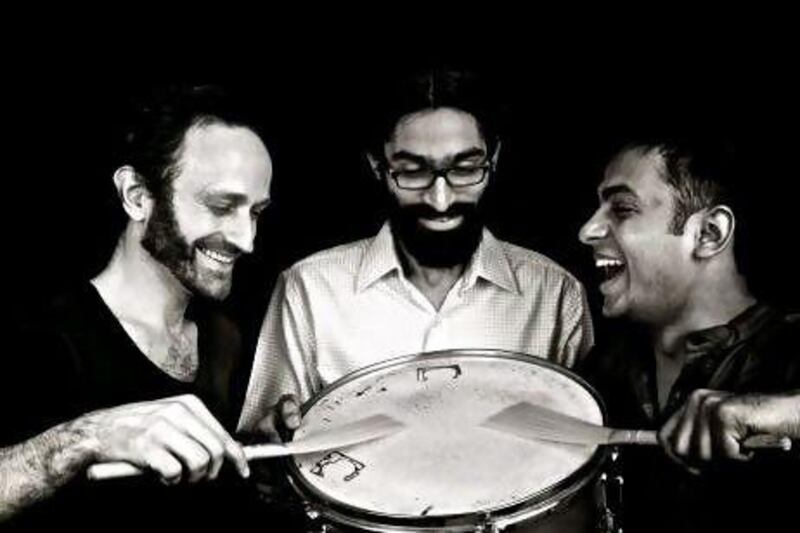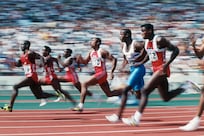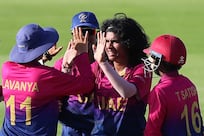In the last three years, the jazz music scene in New Delhi has seen a shift from festivals offering a mix of big and small bands to independent concerts by new bands who are writing their own musical arrangements.
The venues have changed too - from large open-air stages to intimate night spots.
The Indian capital has nearly a dozen or so ensembles that play a brand of assimilation jazz, drawing from contemporary music genres such as funk, hip-hop, reggae, soul, blues and even a bit of rock.
The core of their composition is traditional jazz around which they improvise to rearrange their music to different beats and new instrumentation, depending on the venue and the audience.
"If there is going to be progressive jazz fusion in the capital and in India in general, a strong traditional jazz base is necessary to allow young musicians to improvise and bring in new influences. Young musicians here are now taking jazz seriously," says Brian Citro, a jazz guitarist from Chicago and a member of the Brian Citro Trio.
The Brian Citro Trio band is a cross-cultural outfit featuring two Indian musicians and Citro, who relocated to India in 2008 as a human rights lawyer from US.
The musician, who has a university degree in performance jazz, teamed up with two New Delhi musicians early this year to make independent music. Critics have described the trio as "a welcome new addition to the contemporary Indian music scene, performing newly composed music".
The trio reinterprets "jazz standards" (original meldoies) by legends such as Thelonious Monk, Sonny Rollins and Wayne Shorter in freestyle compositions. At a concert at Rick's Lounge in New Delhi last week, Citro rearranged several popular jazz numbers by legendary American musicians with contemporary beats.
The jazz drummer Nikhil Vasudevan says the growing tendency to rearrange jazz standards has been prompted by the mushrooming stand-alone concerts in lounge bars and pubs across the capital which demand faster and catchy rhythms.
In the last five years, a virtual explosion of new cafes-cum-performance spaces such as the Blue Frog, Cafe Morrison, Living Room, F Bar, Hard Rock Cafe, Ricks' Lounge, Capitol and Agni have given young musicians a stage on which to experiment.
Some of these lounge bars are in five-star hotels, specially created to promote contemporary fusion music and draw the young clientele out late at night.
The night clubs have given fresh impetus to jazz, triggering a resurgence of the genre which had lost its appeal among younger audiences in the 1990s with the popularity of Indie pop and rock.
The music, which was earlier confined to annual fiestas such as the Jazz Yatra and Jazz Utsav, has freed itself to move the cooler lounge venues, Vasudevan says.
The rearrangements hence play to the gallery of demands. "Some times a song is stripped to its bones and skeleton. Everything changes, including the rhythm," Vasudevan says.
The musician, whose training is partially rooted in Carnatic music, draws inspiration from the American musician Eugene "Gene" Krupa, who played an early 20th century combination of jazz, swing and Dixieland, the way jazz evolved in the black neighbourhoods of New Orleans in the US.
Young jazz musicians in New Delhi are experimenting with avant garde and free jazz like their counterparts in Europe and the US. Freestyle jazz brings the music out of its format and grammar.
"It sounds a bit disorganised with a lot of textured compositions alternating between solo, melody, improvisations and minimalism," Vasudevan says.
The emerging freestyle jazz tends to swing to fusion with local bands such as Drift, Tarun Balani Collective, Syncopation, Jazz Mates Band, Cobbled Streets, Fubar Ghetto, Peter Cat and nU Delhi Big Band Theory, blending jazz with funk, blues, blues, hip-hop, trance and island beats to rearrange old compositions and sing of new Indian realities.
For example, Cobbled Street, a seven-member band which was formed in New Delhi in 2010 describes its music thus: "Though we gather influences from varied genres, essentially we believe that we sound jazz plus funk ... Our music is the result of experimentation and our lyrics are derived from realistic experiences and social issues, among other things."
Jazz is a genre which is constantly evolving, assimilating new influences, including an Indian element, says the jazz bassist Abhishek Mangla, who has studied jazz music at a conservatory in Amsterdam.
"Conservatories across Europe have a mandatory course in Indian rhythm and music. Most musicians spend some time in India," Mangla says.
Down south, jazz acquires a distinct Carnatic flavour, incorporating complex rhythms, while jazz has always been a musical undertow on hit Bollywood soundtracks - especially the songs composed by RD Burman, who had jazz musicians on his rolls.
The history of jazz in India dates back to the 1930s in Mumbai, when musicians such as Chic Chocolate, Teddy Weatherford, Frank Fernand and Anthony Gonsalves made a name for themselves in the Indo-western pre-Independence society of the city, says the book Taj Mahal Foxtrot: The Story of Bombay's Jazz Age by Naresh Fernandes.
Music historians say the jazz icon Duke Ellington visited India in 1963. However, the music arrived in the capital two decades later, in the early 1980s.





